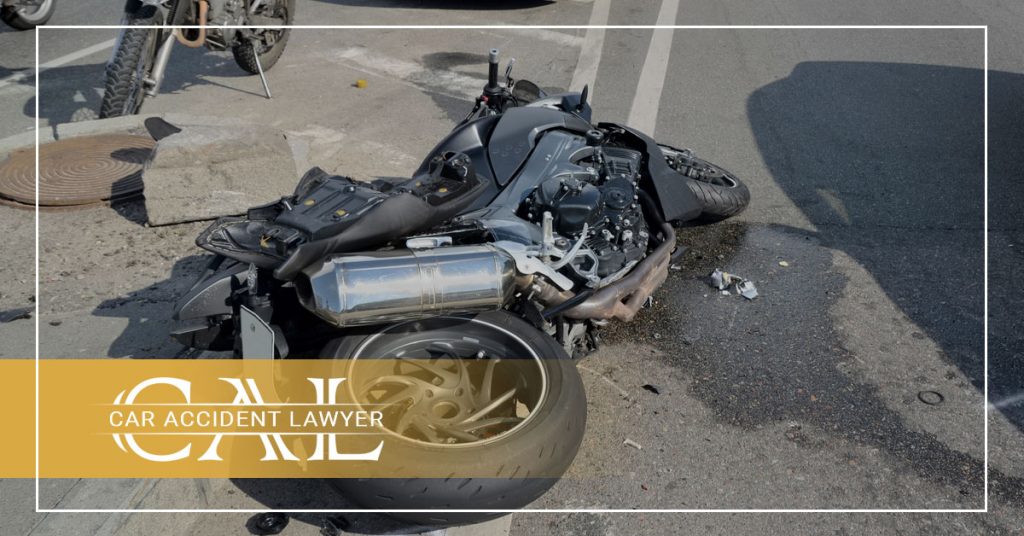In 2018, there were about 8.6 million motorcycles registered in the United States. Although the number of car crashes involving one or more motorcycles has decreased significantly over the years, the statistics show the numbers are still far too high.
For every 100,000 registered motorcycles in 2018, there were 944 injuries to motorcyclists. Nearly 5,000 motorcyclists died while on the road in that same year.
If you’ve been involved in an all-too-common motorcycle accident, you may be wondering what you’re supposed to do. While the steps to take are mostly the same as if you were involved in a car accident, they aren’t identical.
Continue reading below to learn the seven steps to take immediately after a motorcycle accident.
Step 1: Remove Yourself From the Road (if Possible) After a Motorcycle Accident
Before anything else, it’s essential to remove yourself from the road, if possible. Passing vehicles may not see you and cause further injury if you remain in the roadway. This is especially true if you stay in a seated or lying position.
If your current injuries prohibit you from moving off the road, try flagging down the other driver or a passerby to stand beside you. This will be more visible to other vehicles and significantly reduce the risk of you getting struck again.
Step 2: Don’t Remove Your Protective Gear
During and directly following an accident, there’s a lot of adrenaline rushing through your body. In this shocked state, you might not realize if you have injuries. Any injuries you’re aware of maybe worse than you think they are.
The protective gear you wear while riding a motorcycle could be helping to stabilize your injuries to some degree. For example, your helmet can help stabilize any severe head injuries, like a cracked skull, until medical professionals arrive on the scene.
Step 3: Call 9-1-1
If nobody else has called 9-1-1 yet, this should be the first thing you do once removing yourself from the road. The faster you call, the quicker emergency personnel can be on the scene to take care of you and anyone else who is potentially injured.
Try to give as much information on your location as possible. Besides the road you’re on, look for any mile markers or nearby landmarks. The more information you give, the easier it will be to find the portion of the road you’re on.
Step 4: Seek Medical Attention
Even if you don’t think you’ve received any injuries during your motorcycle accident, it’s essential to seek medical attention when first responders arrive at the scene. As mentioned above, you may not understand your injuries’ actual severity while in a state of shock. But, there’s a second reason it’s essential to receive medical attention at the crash scene.
Insurance companies will pay for your medical bills if the other person is at fault. But it can be tricky (or even impossible) to prove injuries stemmed from the accident if it isn’t documented.
Step 5: Gather Evidence
If you’re not seriously injured during the accident, it’s crucial to gather evidence proving what occurred. Taking pictures of the accident site can help later on. Crash site pictures can help prove who was at fault and verify any injuries you may have received.
You should also be sure to get the other driver’s important information. The most important things you should get are the other driver’s name and insurance information. You may also want to take down their license plate number and contact information.
Step 6: Cooperate With Police
When the police arrive on the scene, they’ll want to get a statement of how the accident occurred. It’s vital to cooperate with them and tell the truth. The police may follow up with you in the days to come if they need to clarify anything from your statement.
Step 7: Call Your Insurance Company
It’s essential to call your insurance company as soon as possible after a crash happens. There are a few reasons for this, including:
It may allow you to immediately begin repairing your vehicle, even if the claims process takes awhile
You agreed to do so when you signed the contract for your insurance policy
It’s possible the other driver doesn’t have car insurance
Damage to your vehicle (like bodily injuries) aren’t always evident at the crash scene
Reporting your accident to the insurance company isn’t the same thing as filing a claim. Your premiums won’t go up for reporting the accident, only if you need to file a claim against your policy.
Step 8: Call Your Lawyer After a Motorcycle Accident
Depending on the time of day, you should call your lawyer directly following medical treatment or first thing the next morning. You can also choose to leave a voicemail if it’s late.
If you don’t have a lawyer already, it’s highly suggested you find one to help you navigate the often complicated claims process. A lawyer can help you ensure a fair claim based on your motorcycle’s damage and the treatment needed for your injuries.
Often, insurance companies will try offering a low ball amount that won’t cover what you need it to. Your lawyer can help negotiate a fairer claim, as well as prove why the previous amount was too low.
Do You Have More Questions About the Steps to Take After a Motorcycle Accident?
To protect yourself and help ensure a smooth claims process, you must follow the seven steps outlined above directly following a motorcycle accident. Remember to always ensure your safety before anything else.
Do you have more questions about the steps to take after a motorcycle accident? Or were you involved in a motorcycle accident and need legal assistance?
Contact us today. One of our associates would be happy to answer any questions you still have. They can also help you in scheduling a consultation if desired.

